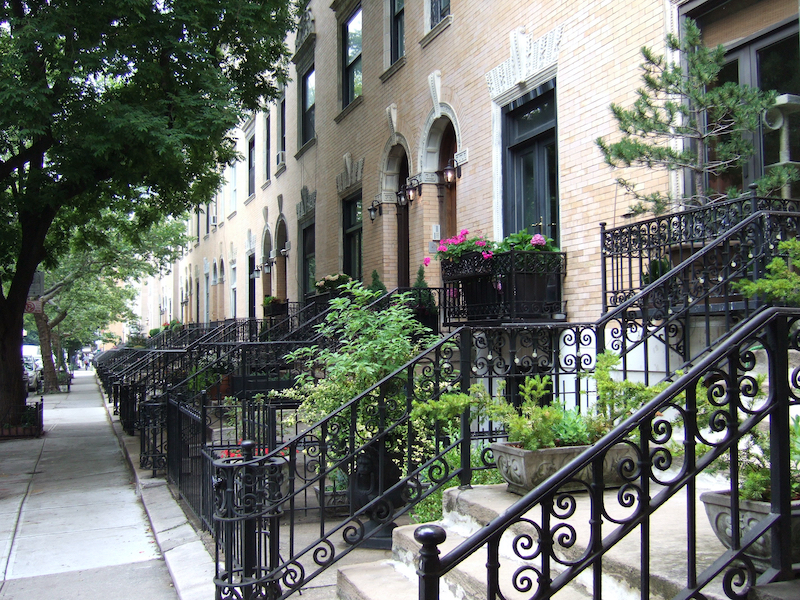Owning Property in a Landmark District: What It Really Means
In New York City, you don’t have to own a famous building to be subject to landmark regulations. Many properties—row houses, co-ops, brownstones, even small multifamily buildings—are located within designated landmark districts, and that status comes with real implications for renovations, restorations, and even routine maintenance.
A landmark district, also known as a historic district, is a grouping of buildings that together reflect a neighborhood’s architectural and cultural legacy. These districts are designated and regulated by the NYC Landmarks Preservation Commission (LPC) to ensure the character of the area is preserved over time.
Examples of Landmark Districts in NYC:
• Mount Morris Park Historic District (Harlem)
• Brooklyn Heights Historic District
• Greenwich Village Historic District
• Fort Greene Historic District (Brooklyn)
• Strivers’ Row Historic District (Harlem)
When your property falls within one of these districts, the entire exterior of the building—regardless of its condition or age—is considered protected. That means even minor changes to windows, stoops, railings, doors, siding, or paint colors may require LPC approval before any work can begin.
Understanding Landmark Designations in NYC
In NYC, a property can be landmarked in several ways. Here’s a breakdown of what each type of designation means:
1. Historic Districts (Most Common)
As described above, these are neighborhood-scale protections. Any building located within a designated district is subject to oversight—even if the building itself isn’t architecturally distinct.
2. Individual Landmarks
These are properties designated for their specific architectural, cultural, or historical value, such as The Dakota or the Empire State Building. Both the exterior and sometimes the interior may be protected.
3. Interior Landmarks
These include spaces like the main lobby of the Woolworth Building or Grand Central Terminal’s main concourse—where even interior changes must be approved.
4. Scenic Landmarks
Landscaped areas like Central Park or Prospect Park fall under this category and are regulated for environmental and historical preservation.
How Landmark Status Affects Renovations
Whether you live in a landmark district or own an individual landmark, the rules around renovations are clear: you can renovate—but only with approval. The LPC must review any proposed work that changes the building’s exterior, especially if it’s visible from the street.
What Requires LPC Approval?
• Window replacements
• Front door replacements
• Roof work (including roof decks, railings, bulkheads, or additions visible from the street or corner)
• Painting or masonry repointing
• Exterior lighting or signage
• Rear additions (if visible from a public way)
• Restoration of architectural details (e.g., cornices, ironwork)
For interior landmarked properties, LPC review extends to changes in walls, ceilings, flooring, and more.
Types of Approvals You Might Need
• Certificate of No Effect – For interior work or mechanical upgrades that don’t alter protected elements.
• Permit for Minor Work – For small-scale repairs using in-kind materials.
• Certificate of Appropriateness (CofA) – Required for substantial changes or restorations that affect the building’s appearance.
Failure to obtain proper approvals before beginning work can lead to stop-work orders, fines, delays, and potential legal issues when you go to sell or refinance.
Benefits of Owning a Landmark Property
While regulations may seem daunting, there are tangible upsides to owning a landmark property in New York City:
• Architectural Prestige – Your home is part of the city’s visual legacy.
• Long-Term Value – Properties in landmark districts often hold or increase value thanks to their character and stability.
• Tax Credits – Some state and federal tax credits may apply to qualified historic rehabilitations.
• Neighborhood Protection – Landmark designation limits inappropriate development and preserves neighborhood aesthetics.
Challenges to Consider
• Longer Timelines – LPC review can take weeks or months, especially for extensive alterations.
• Higher Costs – Materials and contractors must often meet specific historical standards.
• Limited Flexibility – Certain design choices are off-limits—even modernizing with vinyl windows may be prohibited.
Why This Matters From A New York City Perspective
As a real estate professional working throughout Manhattan including Harlem, Brooklyn, the Bronx, and beyond, I often meet clients who are drawn to the beauty of pre-war architecture—but are surprised by the level of oversight involved in renovating.
In areas like Harlem’s Mount Morris Park, or Bed-Stuy in Brooklyn, understanding what the LPC will and won’t allow is essential to budgeting, timing, and design decisions. For buyers, it’s a critical part of due diligence. For owners, it’s about finding the right balance between preservation and modernization.
Tips for Navigating Landmark Rules
1. Check Your Status First
Use the LPC’s Interactive Map to confirm if your property is in a landmark district.
2. Work with Experienced Pros
Architects and contractors familiar with LPC requirements can help you design a compliant plan—and avoid costly mistakes.
3. Expect a Process
Submit detailed drawings, historical references, and photos. Applications that demonstrate thoughtful preservation tend to move faster.
4. Preserve What You Can
Retaining and restoring original features—rather than replacing them—will help you get LPC approval and preserve the property’s value.
Is a Landmark Property Right for You?
Owning a landmarked property in New York City means becoming a caretaker of architectural history. It’s a chance to preserve craftsmanship and legacy, while still living and investing in one of the greatest cities in the world.
But it’s also a commitment—to compliance, to thoughtful design, and to stewardship. If you’re considering buying or renovating in a landmark district, understanding the rules upfront can save you time, money, and frustration—and lead to a home you’ll be proud to call yours.
Questions about buying or renovating a landmark property in NYC? I’m happy to help you navigate the process.
Sources:
• NYC Landmarks Preservation Commission (LPC)
• National Trust for Historic Preservation
• NYS Historic Preservation Office
• Preservationists Hope New Landmarks Rules Will Better Protect Historic Buildings, Prevent Demos


